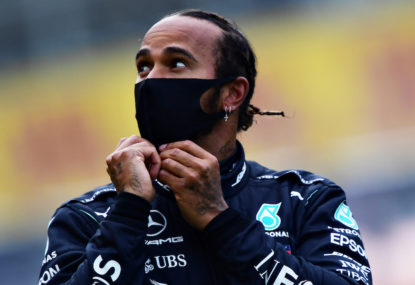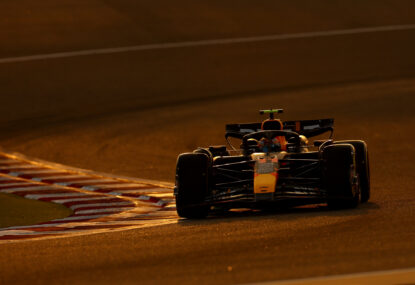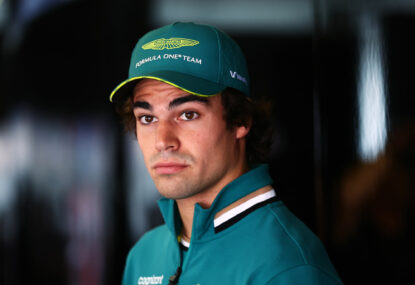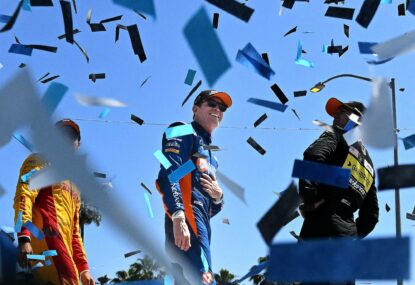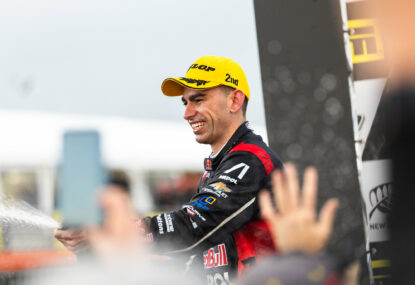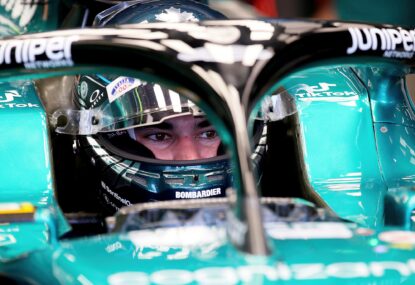The dictionary has been exhausted of all adjectives that could be used to describe the bizarre events that have taken place in 2020.
The world was effectively thrown into a state of shutdown and mass disarray, as the COVID-19 pandemic gripped the globe. This also meant that sports were put on hold during the uncertain times.
We have now reached the conclusion of 2020, with motorsport having found a way to return to our screens and into our lives, and it is nice to sit and reflect on the incredible journey that the various global categories have had to go through to reach this moment.
It feels like eons ago that among the inclement conditions at Mount Panorama that Bentley’s own thunder from its Continental GT3 racer finally added its name to the Bathurst 12 Hour winner’s roster. A solid enduro drive from the young trio of Jordan Pepper, Maxime Soulet and Jules Gounon steered the number seven green machine across the finishing line.
Formula One, MotoGP and the Supercars championship had all entered their various pre-seasons and testing programs in February and March with the coronavirus starting to become a consistent topic of conversation. But it was unknown at the time whether it would have the impact that it did.
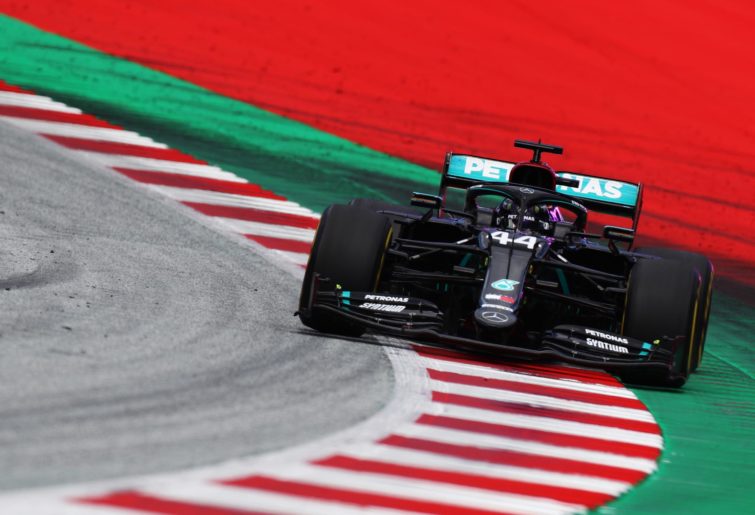
(Photo by Mark Thompson/Getty Images)
Formula E’s Season Six was just heating up at the end of February after the Marrakesh ePrix, as the internal DS Techeetah championship battle between reigning two-time champion Jean-Eric Vergne and António Félix da Costa was just beginning to peak.
The Adelaide 500 took place in front of a meagre crowd, as title rivals Jamie Whincup and Scott McLaughlin both took one win apiece.
All assembled in Melbourne for the traditional curtain-raising Australian Grand Prix. It wasn’t until March that the true impact of COVID-19 was felt, as a cloud of uncertainty hung over Albert Park on Thursday March 12. Unprepared and heading into the unknown, it was during the same evening in which the shock announcement had come that a team member from McLaren had tested positive. As a result, the entire team withdrew from the event.
How apt it was that on Friday the 13th, which in my books will go down as one of the most bizarre days in sports history, that it took several hours before a joint decision was made by the FIA, Formula One and the AGPC to cancel the event. Instead of live blogging the Australian Grand Prix, I found myself live blogging updates for The Roar from Albert Park that Friday with regards to the cancellation of the event.
That non-event marked the beginning of a wider shutdown across Australia, before global motorsport and the wider world of sport went into hibernation as we all sought to plan a safe way to get back to the racetrack. It was amazing though that race teams and organisations across the world began shifting their resources to aiding in the development of ventilators and other medical equipment for the fight against COVID-19.
By June and many online racing championships later, the real motors began cranking back into life. IndyCar was one of the first to get back to the track at the Texas Motor Speedway, where Scott Dixon came out for the first of a hat trick of wins en route to his sixth title.
Face masks, social distancing and empty grandstands would become the norm, as the virus still loomed as a threat – however now everyone was better equipped.
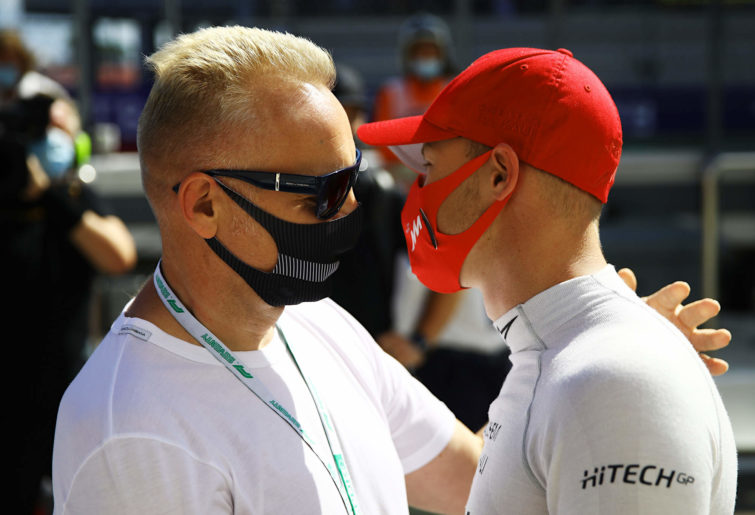
(Photo by Joe Portlock – Formula 1/Formula 1 via Getty Images)
To end its season, Formula E held an unprecedented six races in nine days at the Tempelhof circuit in Berlin, which boasted multiple layouts. The title was won by Da Costa and more excitingly, we saw the emergence of Mercedes and Stoffel Vandoorne as a possible contender for 2021.
Supercars returned at the end of June with McLaughlin picking up where he left off in Adelaide, hunting for that third consecutive championship. A revised sprint race format and tyre rules as a result of having less team members during pit-stops brought with it exciting racing and different faces on the top step of the podium.
However, with the fluid situation between Australian state borders and the second wave in Victoria, the teams and drivers from Victoria were forced into exile on the road and away from families and loved ones.
It was a sacrifice deemed necessary in order for Supercars to race on and for the revenues to begin coming through to ensure all the staff still had an income. The added motivation saw the likes of Tickford, Team 18 and Erebus all punch above their weight, with victories for Jack Le Brocq, Cameron Waters and Anton De Pasquale, while Team 18’s Scott Pye delivered the squad’s first podium in Darwin.
The season ended with the greatest race of all at Mount Panorama, with a classic Holden versus Ford battle for the Bathurst 1000. This ended a great season in which McLaughlin won his third title against the odds of the critics and the Holden brand was farewelled with a victory from Shane van Gisbergen and Garth Tander.
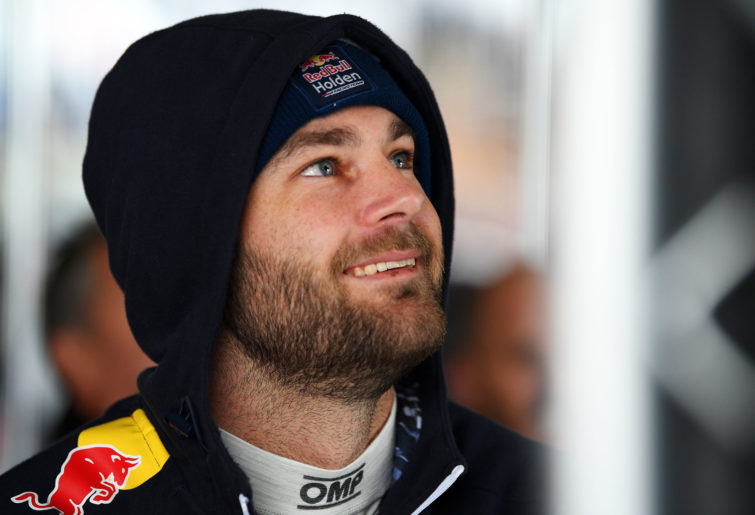
(Daniel Kalisz/Getty Images)
Formula One and MotoGP were finally underway in July, with vast changes to their schedules and new circuits being added to ensure a valid championship was had on both fronts. Valtteri Bottas stormed to victory in Austria for Mercedes, spearheading what was thought to be a title-winning campaign, as did French MotoGP sensation Fabio Quartararo in Jerez.
But this was definitely a script trampled over by a black cat. Bottas was comprehensively beaten by Lewis Hamilton, who surpassed the great Michael Schumacher’s all-time wins record of 91 and then equalled the German on seven world champions. He also championed a push of ending racism and promoting inclusivity in wake of the Black Lives Matter movement in the United States.
Quartararo’s misfortune on two wheels was compounded by Yamaha’s own dismal 2020 bike. With the open opportunity for the championship, as Marc Márquez was sitting injured on the sidelines, the lack of consistency was exposed on the MotoGP grid.
This was all before Suzuki’s Joan Mir emerged in a season of such highs and lows. He was the only rider to have been consistent enough to claim a maiden title in the Premier Class. A maiden race win at the European Grand Prix was the feather in the young Spaniard’s cap, as the might of Andrea Dovizioso, Maverick Viñales and even Valentino Rossi couldn’t capitalise on this rare season without Márquez.
Still, it was a season that welcomed fresh faces emerge on the podium, such as the eventual championship runner up in Franco Morbidelli and rookie race winner Brad Binder aboard the KTM. Rookie Álex Márquez also ensured that his family name would still be represented on the podium with back-to-back second places at Le Mans and Aragon.
This was similar to Formula One, which saw 13 different drivers grace the rostrum – the most seen since the start of the hybrid-turbo era in 2014. While the season was dominated by Mercedes and Hamilton in their class above, the fight for third in the constructor’s championship kept all entertained until the final race in Abu Dhabi.
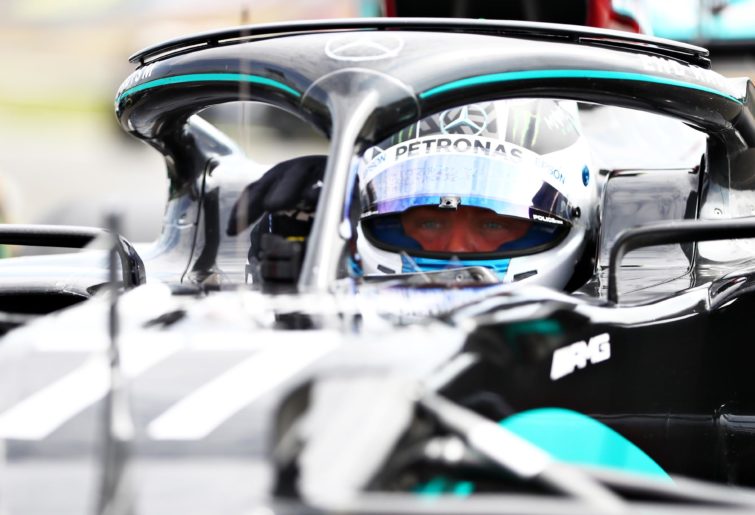
(Photo by Dan Istitene – Formula 1/Formula 1 via Getty Images)
McLaren, in their remarkable comeback from the dark days of their maligned Honda partnership, finished third as a result of their consistency across both their drivers in Lando Norris and the Ferrari-bound Carlos Sainz. This was something even a career-best season for Sergio Perez – despite missing two races as a result of being diagnosed with COVID-19 – that Racing Point couldn’t manage, even with the clear third fastest car on the grid.
It took 190 races for the Mexican to claim a win and still he couldn’t hang onto his seat at the team he helped save from oblivion in 2018, as Sebastian Vettel will move across to partner the Turkish Grand Prix pole sitter Lance Stroll at the newly rebranded Aston Martin team.
Justice was achieved with Red Bull Racing completing their 2021 line-up with the addition of Perez. It was a disappointing season overall for the energy drinks giant, with the RB16 under-performing and the championship’s third wheel in Max Verstappen claiming a couple of consolation victories.
Pierre Gasly also shocked with his incredible Monza victory, emulating Vettel’s first win for the same Italian Red Bull junior squad back in 2008. It was a more difficult season for his successor at the senior Red Bull team in Alex Albon, with only two podiums to his name. He has since been relegated to the bench for next season.
While certain outcomes may not have satisfied everyone, 2020 should’ve taught us to be more grateful for having any motorsport at all. Formula One may not be the most thrilling when it comes to Mercedes having a genuine title rival, but it is something that will hopefully be corrected by 2022.
We should be grateful that Romain Grosjean escaped that horrific fireball in Bahrain with his life, or similarly for Rossi and Viñales during their separate brushes with death in Austria on two wheels. We should be grateful for all that the Williams family have given to Formula One in their final year directly involved with the sport and also the Victorian team members and Supercars staff who left their families to ensure a championship was completed.
For all that, a great big thank you should be said to those who were able to give us fans, commentators and content creators our fix of wheel-to-wheel action and gripping narratives, which motorsport so regularly provides.
Whether 2021 will return to normalcy remains to be seen, but what is normal after the year that we have all had? As long as the racing continues and keeps us entertained, that should be considered normal enough for all fans of motorsport.





























































































